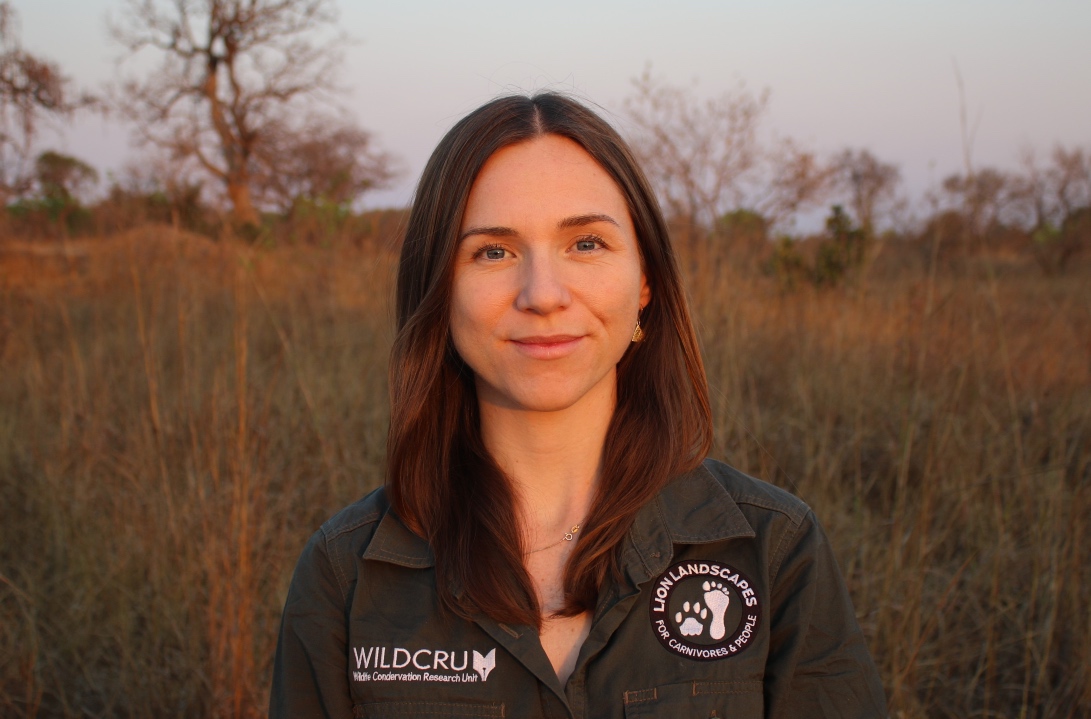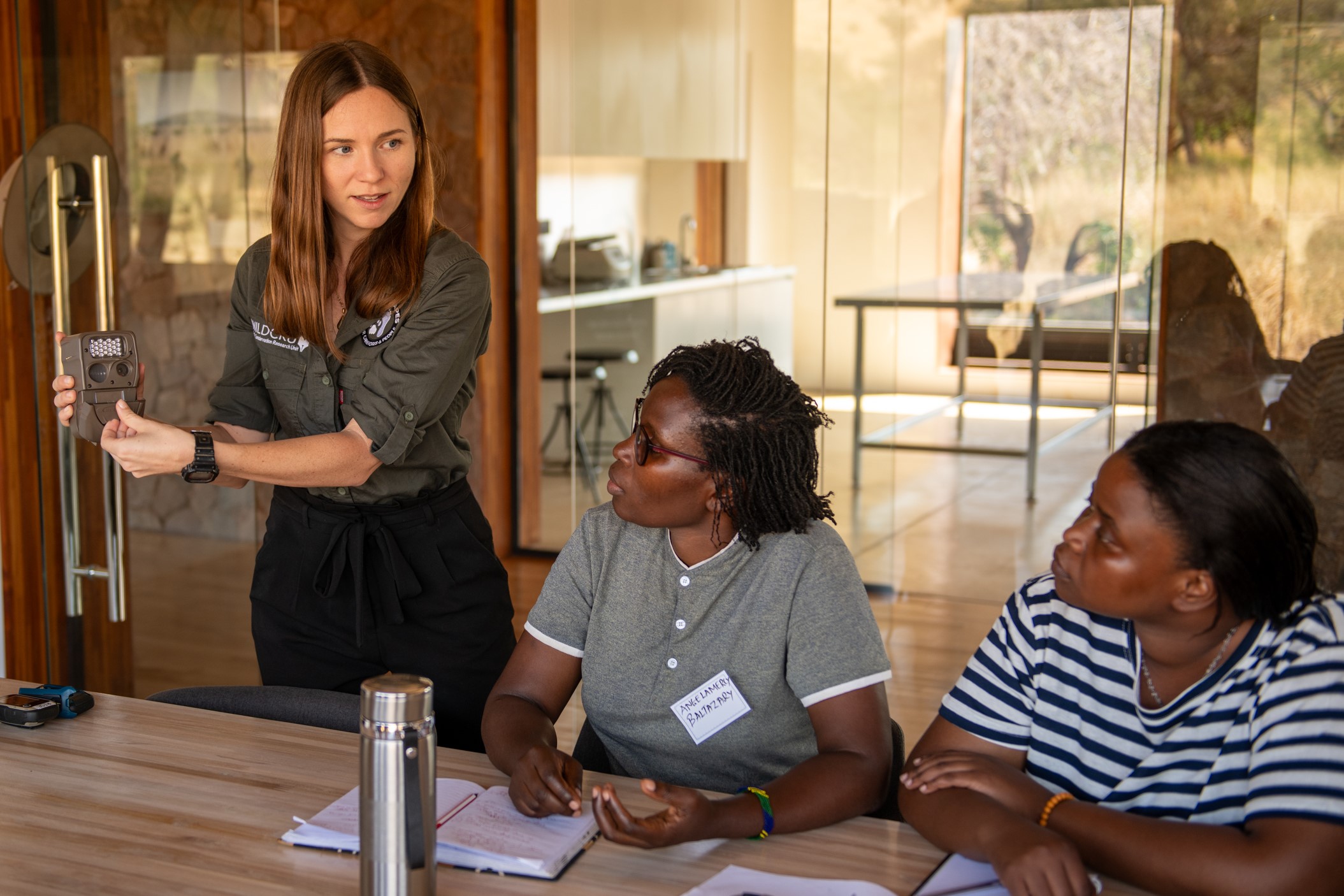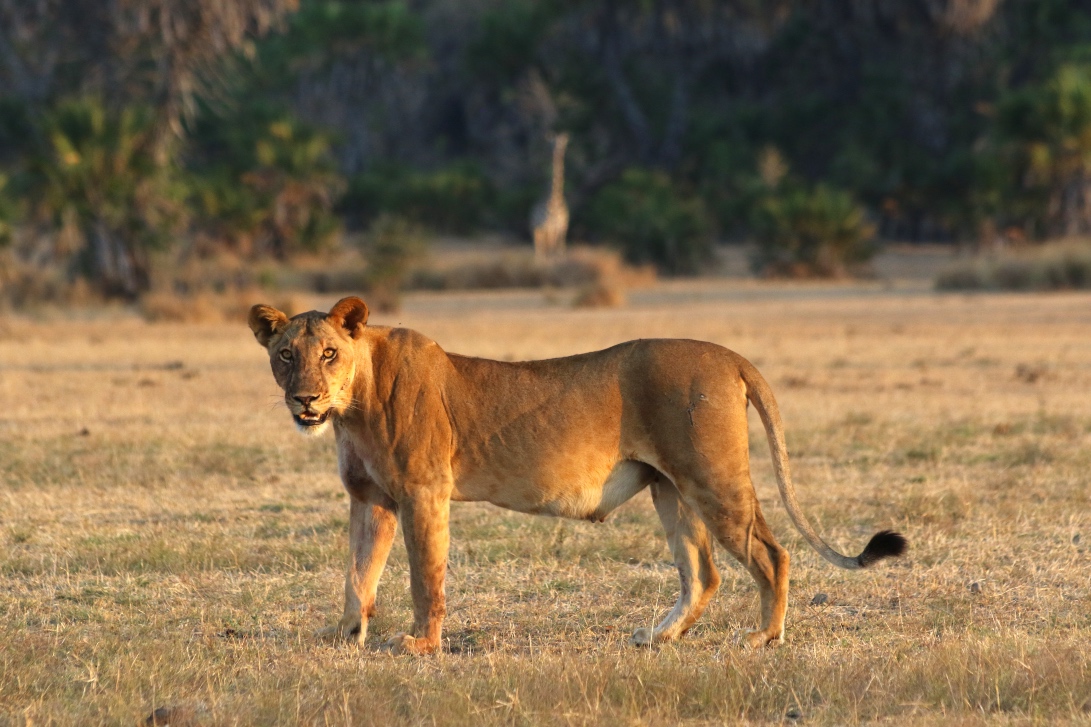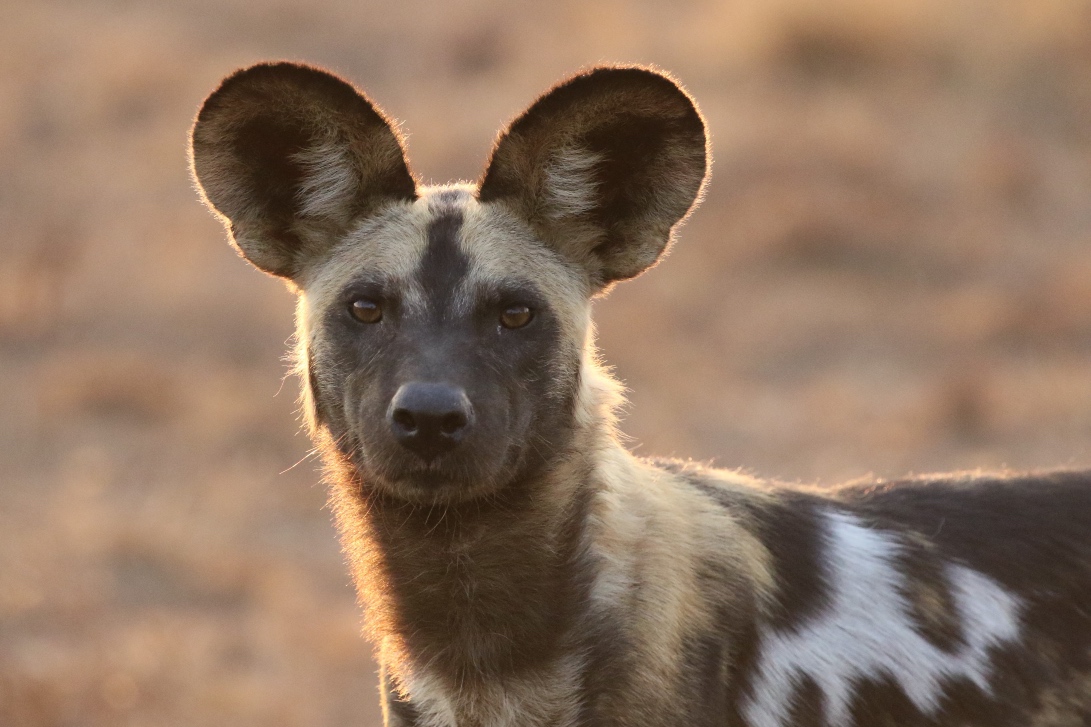
Academic Visitor
Dr Charlotte Searle
PROFILE
Charlotte Searle is a Senior Researcher with Lion Landscapes. She specialises in the ecology of African large carnivores, with a particular focus on translating the outputs of research into effective conservation action.
Charlotte joined WildCRU in 2017 with a scholarship from the NERC Doctoral Training Partnership in Environmental Research. Her doctoral research explored the status and ecology of African leopard in the KAZA TFCA and Tanzania’s Ruaha-Rungwa landscape, both of which are thought to be major strongholds for the species in its remaining African range. She continued her work with WildCRU after completing her DPhil in early 2021.
In 2020, Charlotte’s work brought her to Selous-Nyerere, another globally-important conservation landscape in southern Tanzania, where she currently leads a project to monitor and conserve large carnivores across the 50,000km2 ecosystem.
In this role, she has conducted camera trap surveys to estimate carnivore population densities, supported large-scale spoor surveys to model distribution and habitat use of carnivores and their prey, and deployed collars on wild dogs and lions in the areas where they are most at-risk to inform protection and conflict-mitigation activities. The work has also featured a major capacity building component, through which she has delivered training in field and analytical methods to more than 150 Tanzanian government officers, conservationists, researchers, and students.
Through her survey work in Ruaha-Rungwa and Selous-Nyerere, Charlotte has helped improve our understanding of some of the most important remaining populations of lion, leopard, and African wild dog on the continent. She has also partnered with other researchers to assess connectivity in key wildlife corridors and carry out research on elephants, ground hornbills, and acoustic monitoring.
In parallel to her field-based efforts, Charlotte has also contributed to a number of initiatives to improve African large carnivore conservation at a larger scale, including updating the Tanzanian National Action Plan for Lion & Leopard and revising the Eastern Africa Regional Conservation Strategy for Cheetah & African Wild Dogs. She is a National Geographic Explorer and a member of the African Wild Dog Working Group and African Lion Working Group. She has contributed data for the IUCN Red List assessments for lion, leopard, cheetah, African wild dog, caracal, and serval, and has shared data on spotted hyaena, striped hyaena, aardwolf with the Hyaena Specialist Group.
Prior to joining WildCRU, Charlotte graduated from the University of Cambridge in 2013 with a degree in Natural Sciences specialising in Zoology, for which she was awarded the Godwin Prize for Life Sciences. She then spent three years in the insurance industry, working as an Emerging Risks Researcher at Lloyd’s of London and a Catastrophe Modeller at Willis Re. In 2016, she returned to academia as a research assistant for a project studying black howler monkeys in Mexico’s Palenque National Park.




SELECTED PUBLICATIONS
To view the full list of their publications, please visit their Research Gate / Google Scholar page.
Cheetahs in Tanzania’s Selous–Nyerere ecosystem: lack of evidence for current persistence, and reflections on historical status
Spotted hyaena population density across habitat and land use types in southern Tanzania
Random forest modelling of multi-scale, multi-species habitat associations within KAZA transfrontier conservation area using spoor data
Leopard population density varies across habitats and management strategies in a mixed-use Tanzanian landscape
Temporal partitioning and spatiotemporal avoidance among large carnivores in a human-impacted African landscape
Drivers of leopard habitat use and relative abundance in Africa’s largest transfrontier conservation area
Cheetahs in Tanzania’s Selous–Nyerere ecosystem: lack of evidence for current persistence, and reflections on historical status
Spotted hyaena population density across habitat and land use types in southern Tanzania
Although the spotted hyaena (Crocuta crocuta) has been widely considered to be resilient to human disturbance, the species is now thought to be undergoing widespread population declines. Nevertheless, only a handful of population density estimates are available for the species, despite the importance of this information for informing conservation management. This is a consequence of both a lack of surveys and logistical challenges associated with processing spotted hyaena data. In this study, we collaborated with a cohort of students to process camera trap data from the Ruaha-Rungwa landscape initially collected to estimate lion (Panthera leo) and leopard (Panthera pardus) population density. By doing so, we provide the first spatially explicit population density estimates for spotted hyaena in Tanzania, via spatially explicit capture-recapture (SECR) modelling. We also examine the relationship between population densities of spotted hyaena, lion and leopard at each site. Spotted hyaena densities varied from 3.55 ± 0.72 adults and sub-adults per 100 km2 in a miombo (Brachystegia-Julbernardia) woodland area of Ruaha National Park, to 10.80 ± 1.08 per 100 km2 in a prey-rich open woodland savannah habitat in Ruaha National Park, with intermediate densities recorded in Rungwa Game Reserve and MBOMIPA Wildlife Management Area. Our results suggest that spotted hyaena density is influenced by prey availability and protection, and the species may be less resilient to human pressures than widely thought. Spotted hyaena densities were generally positively correlated with densities of lion and leopard, suggesting that prey availability and anthropogenic disturbance had a greater impact than interspecific effects in shaping large carnivore densities in this system. Overall, our study provides some of the first insights into an under-studied species in an under-researched part of its range, while shedding light into the impact of anthropogenic versus interspecific effects in shaping population status of spotted hyaena in human-impacted African systems.
Random forest modelling of multi-scale, multi-species habitat associations within KAZA transfrontier conservation area using spoor data
As landscape-scale conservation models grow in prominence, assessments of how wildlife utilise multiple-use landscapes are required to inform effective conservation and management planning. Such efforts should incorporate multi-species perspectives to maximise value for conservation, and should account for scale to accurately capture species-environment relationships.
We show that the random forest machine learning algorithm can be used to model large-scale sign-based data in a multi-scale framework. We used this method to investigate scale-dependent habitat associations for 16 mammal species of high conservation importance across the southern Kavango Zambezi (KAZA) Transfrontier Conservation Area in Botswana and Zimbabwe.
Our findings revealed substantial variation in factors shaping habitat use across species, and illustrate that different species often have divergent responses to the same environmental and anthropogenic factors, and differ in the scales at which they respond to them. For all variables across all species, scale optimisation most often selected our largest scale.
Precipitation, soil nutrients, and vegetation appeared to be the most important factors determining mammal distributions, likely through their associations with food resources for herbivores and, in turn, prey availability for carnivores.
Anthropogenic pressures also had an important influence, with many species selecting against areas with high cattle density. The variety of relationships with human density indicated that species vary in their tolerance of humans. We found a consistent positive relationship with areas under high protection, and negative relationship with unprotected and less-strictly protected areas.
Policy implications. Through a novel application of random forest modelling to spoor data from 16 mammal species, this study highlights the importance of adopting a multi-scale, multi-species approach for decision-making processes that depend on understanding wildlife distributions and habitat associations, such as protected area and corridor prioritisation. The findings identify changing rainfall patterns and increasing livestock numbers as emerging trends that may impact wildlife distributions, both within sub-Saharan Africa and on a global scale. Wildlife management authorities should use modelling exercises and adaptive management to ensure that protected area networks remain fit for purpose under anticipated changes in rainfall under climate change, and explore initiatives that promote coexistence of wildlife and livestock.